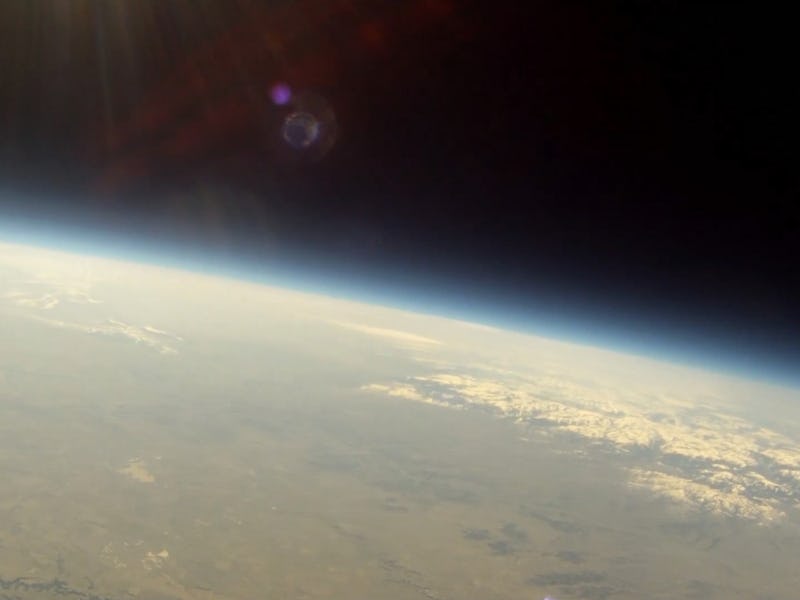Solar Eclipse Will Let NASA Experiment With Mars-Like Conditions

All across the United States during the August 21 solar eclipse, teams of students as young as 10 years old will shoot high-altitude balloons into the stratosphere to help NASA see how bacteria react to Mars-like conditions. The experiment will test the limits of life’s capacity for survival beyond Earth.
The eclipse provides the agency with a rare opportunity to simulate Mars, because the stratosphere — the second-lowest layer of the Earth’s atmosphere, beginning 5 miles up at the poles and 11 miles up at the equator — will have conditions that are even more similar to the red planet than usual.
The atmosphere of Mars is cool, thin, and radiation-heavy. As it rises, Earth’s stratosphere also gets cool, thinner, and is hit with more radiation, because the top of the stratosphere is above the ozone layer that blocks out some of the sun’s radiation. During the eclipse, the heat and radiation from the sun will be blocked even further, so the stratosphere will become even more Mars-like.
A photo taken from the stratosphere.
When the eclipse begins, student teams will send over 50 high-altitude balloons up to the stratosphere.
First of all, these balloons will stream the eclipse and send the live footage to NASA’s website. That’s already really cool, but 34 of them will also transport a small metal card covered with dried, harmless bacteria. The teams with these balloons will have a duplicate card that they keep on the ground; NASA will later compare the two cards to learn more about how life forms react when they’re exposed to such extreme conditions.
An example of the metal card that will be used to carry bacteria.
The solar eclipse will affect the entire continental United States. Teams of students from Alaska to Puerto Rico have signed up.
“Performing a coordinated balloon microbiology experiment across the entire continental United States seems impossible under normal circumstances,” David J. Smith of Ames of NASA’s Space Life Science Training Program, said in a press release. “The solar eclipse on August 21st is enabling unprecedented exploration through citizen scientists and students. After this experiment flies, we will have about 10 times more samples to analyze than all previously flown stratosphere microbiology missions combined.”
An example of the high-altitude balloon that will be launched during the solar eclipse.
It’s pretty rad that 10-year-olds are helping NASA scientists perform such an important experiment.
“This project will not only provide insight into how bacterial life responds to Mars-like conditions, we are engaging and inspiring the next generation of scientists,” said the agency’s director of planetary science at NASA headquarters, Jim Green, in the press release. “Through this exciting ‘piggyback’ mission, NASA is collaborating with scientists of the future to take a small step in the search for life beyond our planet.”